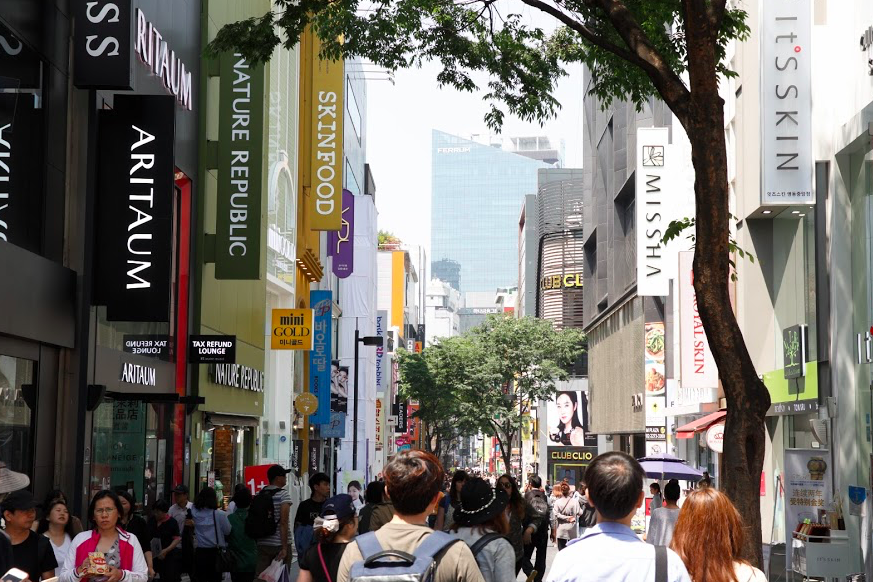Blonde. Big, blue eyes. Sun-kissed skin. Busty. Tall.
This is what I considered the pinnacle of beauty when I was growing up in the DC area. And it’s more or less the opposite of what I look like as a Korean-American.
Looking back now, it doesn’t come as a surprise to me that at age 21 I basically saw Blake Lively as the female ideal. Sure, I grew up in a diverse area (my friend group seemed as multicultural as the UN), but it was hard to ignore what I saw on my TV screen, in movies and on the pages of Seventeen and Cosmo.
That all changed when I moved to Korea.
Suddenly, I went from sticking out in a crowd to joining a teeming sea of shiny, black-haired heads.
For the first time, I could find foundation in the right tone for my skin. It was magical for me to swipe on shades that blended seamlessly onto my cheekbones, just like the magazines had always said they should. I could finally see just how garishly pink my U.S. foundations had been against my natural yellow undertones.
After years of fighting the natural shine on my face with powders and mattifiers in the southern humidity, I finally came to appreciate the dewy, gwang glow that is so prized in Korea. Eye makeup, which had always been this mysterious world of “socket lines” and “orbital ridge” (uh, which I don’t really have), now made a lot more sense.
And the style! Fashion in Korea was no joke, and I loved how easy and affordable it was to find clothes that fit. I had, after all, moved to a country of people who were more or less built the same as me.
The differing definitions of how to dress “appropriately” were also striking. Before Seoul, I’d spent four years living in Miami, where cleavage was everywhere. In Korea, on the other hand, necklines were conservative — and the hemlines were anything but. After a few years in Seoul, I found myself empathizing with both sides in this expat-drawn cartoon:
That’s not to say I was a perfect match for the beauty standard in Korea. When I flipped on the TV, the women in the commercials almost universally had the desirable large, wide eyes with the ssangapul “double eyelid” crease; pale, glowing skin; and a heart-shaped, “V-line” jaw.
I, on the other hand, have the small “monolid” eyes that many Asians are naturally born with (of course, some are born with ssangapul, too). I arrived in Seoul sporting a deep tan from years of varsity crew. I have wide cheeks and a strong, square jaw (I got it from my mama). I was never unhappy with those features, but it was remarkable to hear other Koreans — children, even — tell me that I “didn’t really look Korean.”
In South Korea, as is in any country, there’s intense pressure to conform to a certain set of beauty standards — there are mirrors everywhere, your headshot is on your résumé, and on the surface level, it seems that so much of society tells you that image really is everything. But as I made more Korean friends, I saw they were anything but shallow. Generosity and camaraderie run deep throughout the culture, and I felt myself being welcomed into the tribe.
A friend recently shared with me a proverb that I’ve come to apply to my time in Korea: “Take what you need, leave the rest.” When it comes to beauty, I took a lot away from six years of living in Seoul. I embraced the skin-first philosophy, working with nature instead of against it. I’m a devotee of the fresh, no-makeup look and loath to try the matte, heavily contoured looks that are the rage in New York now. I’m still getting used to seeing cleavage out in the open again. (But if you got it, flaunt it, I say!)
Over the years, I felt my gaze shift away from just one, all-American beauty standard to see the glory in diversity. Black hair is just as pretty as blonde. Small, dark eyes can be adorable, too. Healthy skin is gorgeous, no matter the color. For me, all it took was a life-changing move to Korea to realize this.
